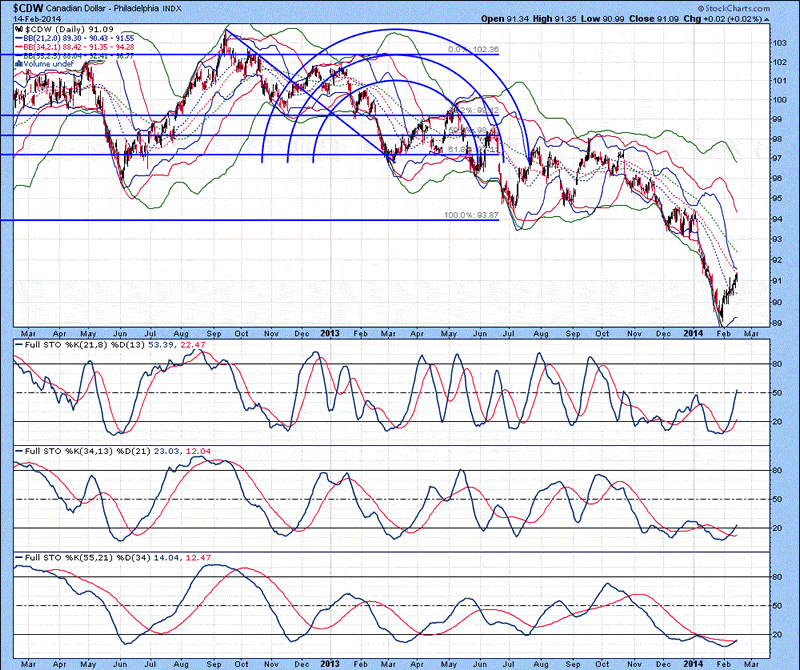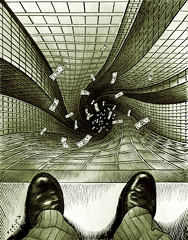” “Slavery is the legal fiction that a person is property. Corporate personhood is the legal fiction that property is a person.” –– Anonymous
In 2010 the NeoConservative, pro-corporate, anti-democratic Roberts’ 5/4 Supreme Court’s decided in the Citizens United vs. Federal Election Commission ruling to grant personhood to corporations by allowing unlimited, anonymous monetary contributions to political campaigns and candidates. This ruling, called by many to be the worst Supreme Court decision of the past century, has emboldened the already powerful and corruptible multinational corporations (that now have achieved dominion over US politics as well as the economy) to “buy” any number of politicians and brain-wash voters by multi-million dollar ad campaigns that the rest of us can’t afford to counter in state and national elections.
The US Supreme Court has thus made legal the absurd notion that inanimate corporations like PolyMet and GTac (potential despoilers of northern Minnesota and northern Wisconsin’s irreplaceable wetlands, aquifers and aboriginal land and water rights) deserve the same privileges (but not the same responsibilities) as living humans.
After the ruling came down, there was only a brief bit of outrage from the so-called national leadership of our essentially “one-party system” (one-party, that is, when it comes to the GOP and Democratic Party’s corporate and militarist agendas). What outrage was expressed was quickly drowned out by a well-timed, mainstream media-orchestrated “tempest in a teapot”, namely Toyota’s recall of tens of thousands of accelerator pedals (that had only infrequently been the cause of significant accidents).
What Should be the Punishment for Corporate Entities That Plunder and Pillage?
The following question about the consequences of the Supreme Court’s democracy-threatening decision must be asked:
If corporations are given the privileges of personhood, shouldn’t they also bear the same responsibilities and incur the same punishments as individuals when they commit crimes, poison the water and air or rape the land?
Peace and justice activists applauded when the citizens of Shapleigh, Maine protected their water rights last year from the insatiable water-extracting corporate giant Nestle. (See video and more information on this episode at: (http://www.afterdowningstreet.org/node/40335).
Nestle, one of the many multinational corporate exploiters, has no allegiance to Maine, Minnesota or Wisconsin or any other state where this foreign entity tries to extract water or minerals that never were theirs to begin with. But when the minerals have been depleted and the water has been polluted or drained, Nestle, PolyMet and GTac will be gone, and so will Exxon/Mobil, British Petroleum, Halliburton, Deep Water Horizon, British Petroleum, Coca-Cola, Perrier or whatever other corporate intruder that ruthlessly extracts or poisons the people’s resources — all for the economic benefit of their faceless investors, shareholders and CEOs at their out-of-state corporate headquarters, none of whom will have to live with the poisoned environment that they have left behind.
The good citizens of Shapleigh recognized the foxes that tried to get inside their henhouse, and they did the right thing by vigorously resisting; and another underdog David — with a lot of justice, a lot of pluck and a little luck on his side — won a rare victory against another evil giant.
Move to Amend: Overturning Citizens United
That small victory against injustice should illustrate what must be done if American democracy is ever to thrive again. The outrageous Citizens United decision must be overturned with a constitutional amendment. (See www.movetoamend.org for more.) The future of the nation, our children, the planet, our drinking water, natural habitat and aboriginal rights are all at stake. And exploitative corporations, just like other sociopathic entities, don’t seem to care.
It is important to understand that the allegiance of big corporations is to its investors, shareholders, executives and management teams, and not to the people whose lives and health depend on the sustainability of the land, water, air and food supplies.
Most corporate shareholders and executives from multinational corporations that are part of Big Pharma, Big Food, Big Agribusiness, Big Oil, Big Finance, etc are motivated by profits and not the common good, and therefore they are not concerned when local resources are used up and the struggling, degraded communities are left behind to fend for themselves (after being fooled into trusting non-human corporations that are inherently untrustworthy [see below]).
”Trust us: We’re the Experts; Toxic Sludge is Good for You; We’ll Clean up After Ourselves” — and Other Corporate Lies
Conscienceless mega-corporations that swoop down on unsuspecting people and naïve governmental bodies, usually ask them to “trust us” and that — at some time in the uncertain future – they will un-poison the often permanently-toxified environment that they secretly intend to just leave behind. The people, understandably desperate for jobs, are usually fooled into believing well-crafted disinformation that is cunningly delivered — until it is too late and the mess that is left behind is no longer the sneaky corporation’s problem. It’s an old con.
Promises made during the courtship phase are likely to be broken with impunity when these foreign corporations are forced to pull-out, merge with other entities or file for bankruptcy. Silver-tongued experts from out of state are very good at getting us rubes up north all starry-eyed over temporary jobs, jobs, jobs while discounting the huge risks of permanent dead and dying zones being created because of their poisonous chemicals.
Wal-Mart, Coca-Cola and Union Carbide/Dow Chemical and Henry Kissinger
A good example of the many tax-avoiding American mega-corporations is Wal-Mart. A large portion of its profits go to a handful of Walton family billionaires in Arkansas. Wal-Mart successfully — and legally — avoids paying for healthcare insurance and other benefits for most of their exploited, underpaid, part-time employees, who are also victims of the corporation’s notorious union-busting policies.
US taxpayers are left holding the bag while Wal-Mart legally avoids what should ethically be their corporate responsibility: to be fair to their employees. Wal-Mart’s notorious below-subsistence level wages forces many of their workers to work a second or third job and also seek welfare benefits — a cunning cost-shifting tactic that places economic burdens on the tax-paying public.
Another example is Coca-Cola. Coke depends on water that it extracts from any water source or aquifer from which the corporation can economically extract it, including, as a particularly egregious example, the aquifers that are situated beneath thirsty, struggling, starving (and then suicidal) farmers who are losing their farms in newly drought-stricken India.
Millions of gallons of water, that have traditionally been used for farmland irrigation systems, are being depleted by Coca-Cola in order to meet the artificial demand that has been created for the sweet, sugary, caffeinated (and therefore addictive), nutritionally useless, obesity-inducing and diabetes-producing soft drink that contains a few cents worth of ingredients and then is sold to poor people everywhere for as much as the market will bear.
Coke’s predation of poor people in India and elsewhere brings to mind another corporate crime that has never been brought to justice. The infamous 1984 Union Carbide cyanide catastrophe in Bhopal, India that killed 25,000 slum-dwellers, left 100,000 permanently poisoned victims whose lives were ruined, and has left uncounted numbers of people living on poisoned soil, drinking poisoned water and breathing poisoned air.
Every person that has been exposed to……”
Comments »





